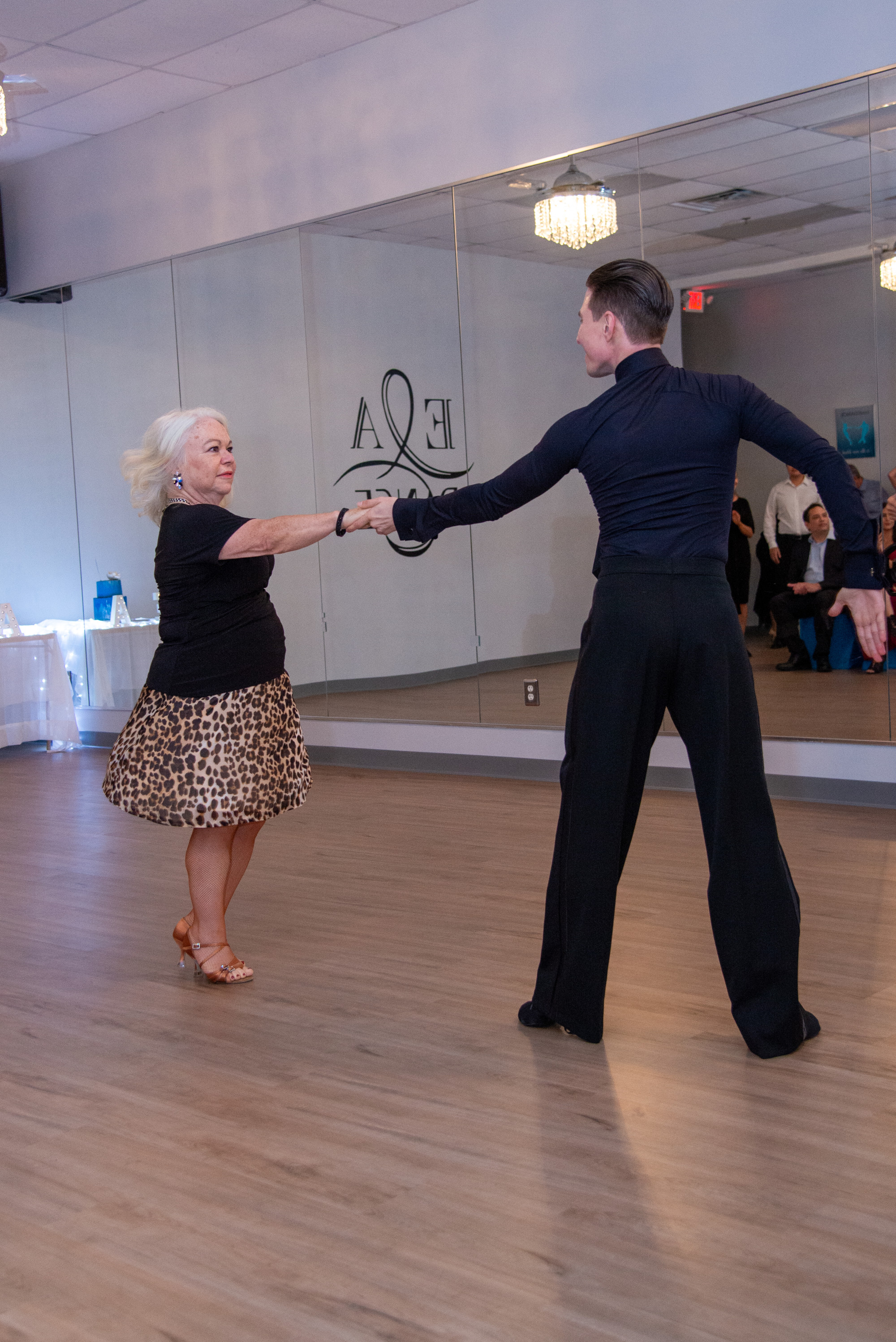Jive Dance Lessons Near Clermont, Florida
Looking to get private dance lessons near Clermont, Florida? We've got you covered! We are conveniently located in Ocoee and ready to help you on your dance journey!
Styles We Teach
Argentine Tango Dance Lessons in Clermont, Florida Bachata Dance Lessons in Clermont, Florida Ballroom Dancing Dance Lessons in Clermont, Florida Bolero Dance Lessons in Clermont, Florida Cha-Cha Dance Lessons in Clermont, Florida Competitive Ballroom Dance Lessons in Clermont, Florida Contemporary Dance Lessons in Clermont, Florida Country Two Step Dance Lessons in Clermont, Florida Couple Dancing Dance Lessons in Clermont, Florida Custom Choreography Dance Lessons in Clermont, Florida East Coast Swing Dance Lessons in Clermont, Florida Flash Mob Choreography Dance Lessons in Clermont, Florida Foxtrot Dance Lessons in Clermont, Florida Hustle Dance Lessons in Clermont, Florida Latin Dancing Dance Lessons in Clermont, Florida Lindy Hop Dance Lessons in Clermont, Florida Line Dancing Dance Lessons in Clermont, Florida Mambo Dance Lessons in Clermont, Florida Merengue Dance Lessons in Clermont, Florida Nightclub Two Step Dance Lessons in Clermont, Florida Paso Doble Dance Lessons in Clermont, Florida Quickstep Dance Lessons in Clermont, Florida Quinceanera Choreography Dance Lessons in Clermont, Florida Rumba Dance Lessons in Clermont, Florida Salsa Dance Lessons in Clermont, Florida Salsa on Two Dance Lessons in Clermont, Florida Samba Dance Lessons in Clermont, Florida Social Dancing Dance Lessons in Clermont, Florida Surprise Dance Choreography Dance Lessons in Clermont, Florida Sweet Sixteen Choreography Dance Lessons in Clermont, Florida Swing Dance Lessons in Clermont, Florida Tango Dance Lessons in Clermont, Florida Viennese Waltz Dance Lessons in Clermont, Florida Waltz Dance Lessons in Clermont, Florida Wedding Dance Choreography Dance Lessons in Clermont, Florida West Coast Swing Dance Lessons in Clermont, Florida

Jive
Jive is a lively and energetic dance style that originated in the United States in the early 20th century, evolving from swing dances like the jitterbug and Lindy Hop. It became especially popular during the swing and rock and roll eras. Jive is typically danced to upbeat music with a strong, driving rhythm, such as rock and roll, boogie-woogie, or rhythm and blues.
Key characteristics of jive include:
- Quick and Bouncy Movements: Jive is known for its fast-paced and bouncy movements, characterized by kicks, flicks, and sharp footwork. It features a lot of energy and dynamic action on the dance floor.
- Triple Steps and Rock Steps: The basic footwork of jive often involves triple steps (triple step, triple step) and rock steps, which give the dance its signature rhythm and bounce.
- Syncopated Timing: Jive is danced with syncopated timing, meaning that steps are often performed on off-beats or in between beats, creating a lively and syncopated feel.
- Jive Frame: Partners typically dance in a closed frame, with the leader's left hand holding the follower's right hand, and the leader's right hand placed on the follower's back. This frame allows for clear communication and connection between partners.
- Lifts and Aerials: Advanced jive dancers may incorporate lifts, jumps, and aerials into their routines, adding excitement and flair to their performances.
- Competitive and Social Dance: Jive is popular both as a competitive dance in ballroom and Latin dance competitions and as a social dance enjoyed at dance parties, clubs, and events.
- Styling and Expression: Jive allows for a lot of room for individual expression and styling. Dancers can incorporate playful movements, facial expressions, and attitude into their performance, adding personality to the dance.
Overall, jive is a high-energy and exhilarating dance style that embodies the spirit of fun and celebration. With its infectious rhythm and dynamic movements, it continues to captivate dancers and audiences around the world.